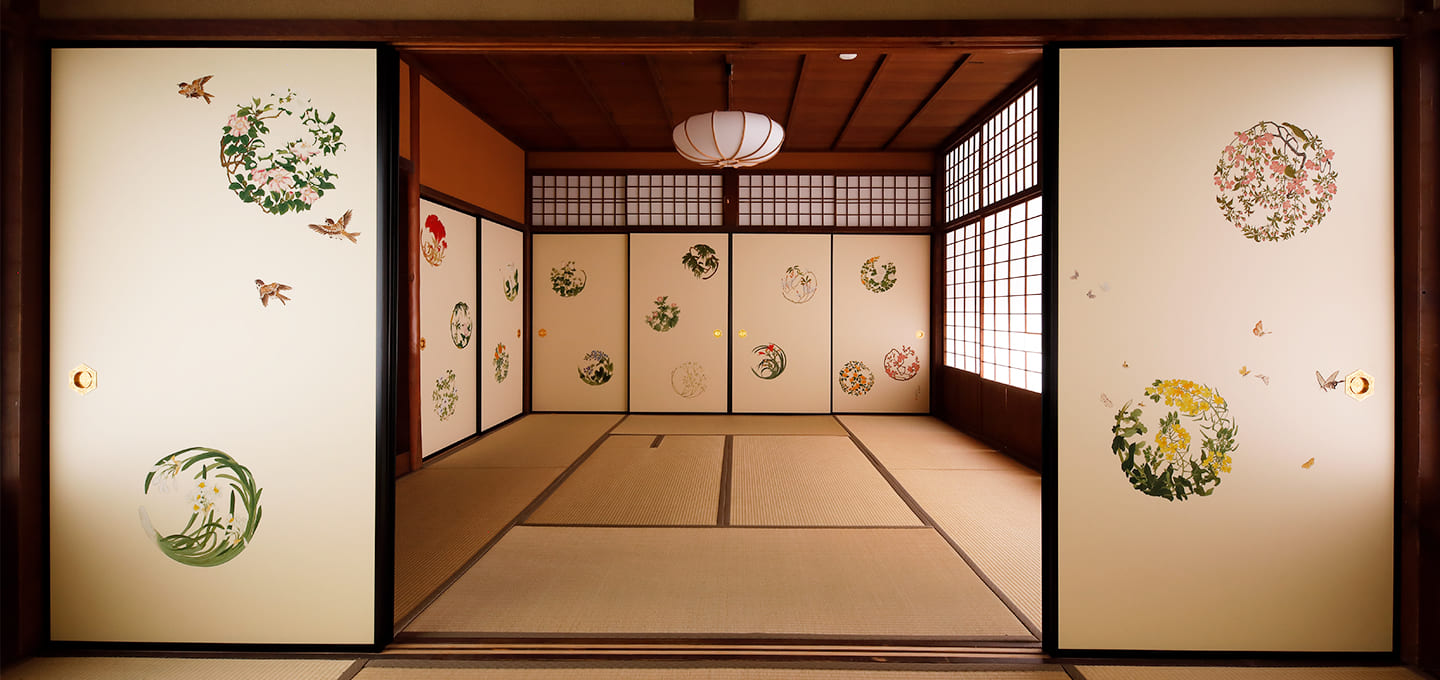
Special Experience
Kyoto
Special Kyoto Temple Tour: Stunning Fusuma Paintings, Zazen Meditation & Matcha
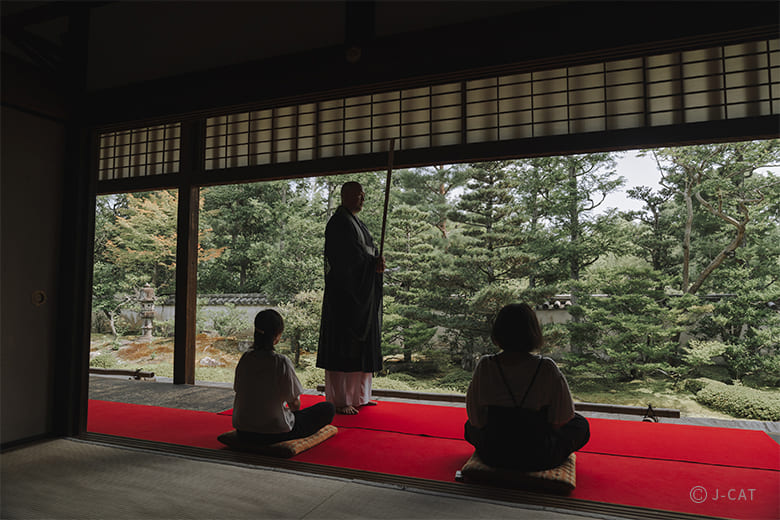
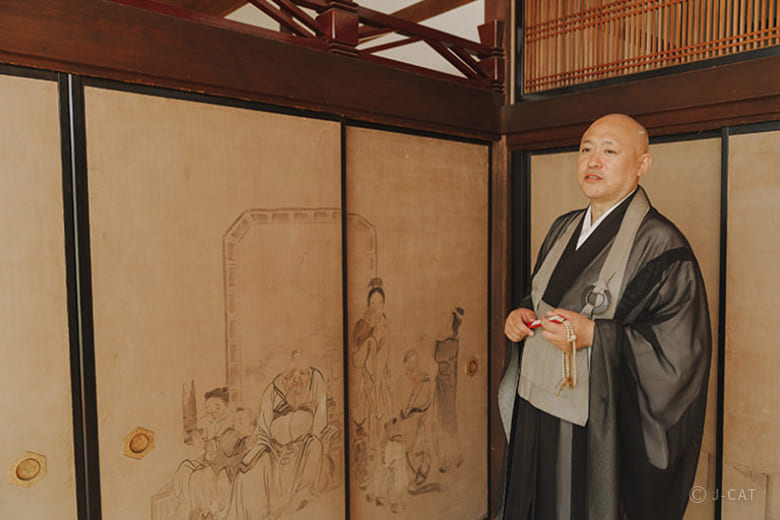
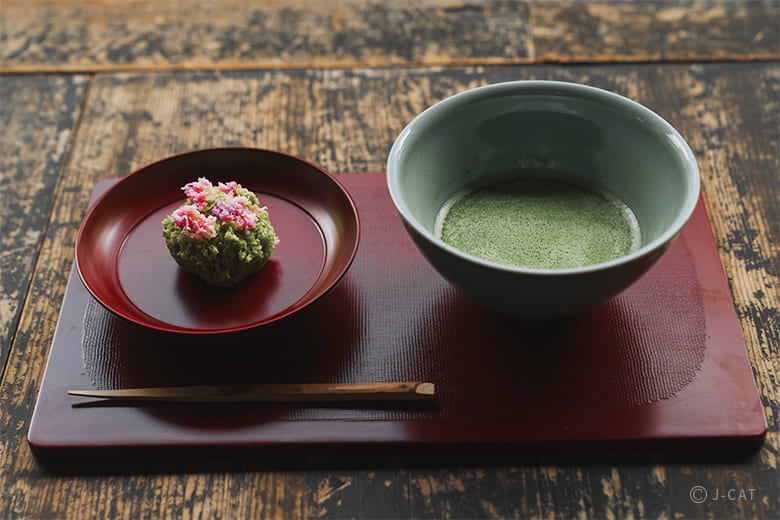
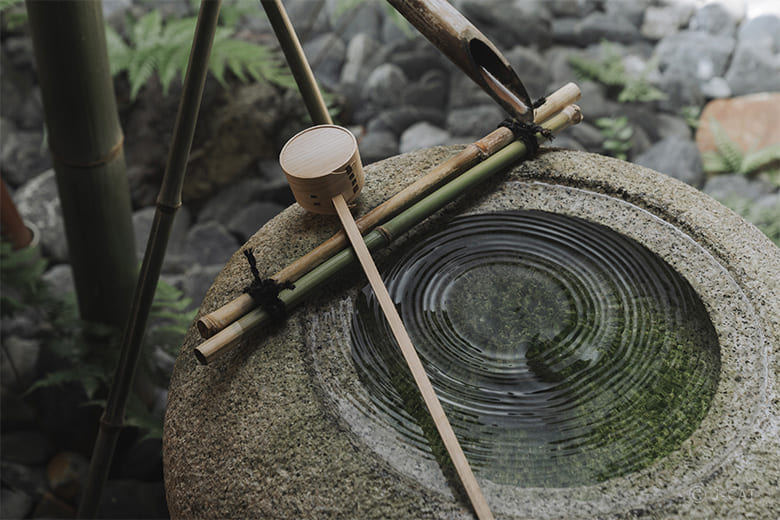
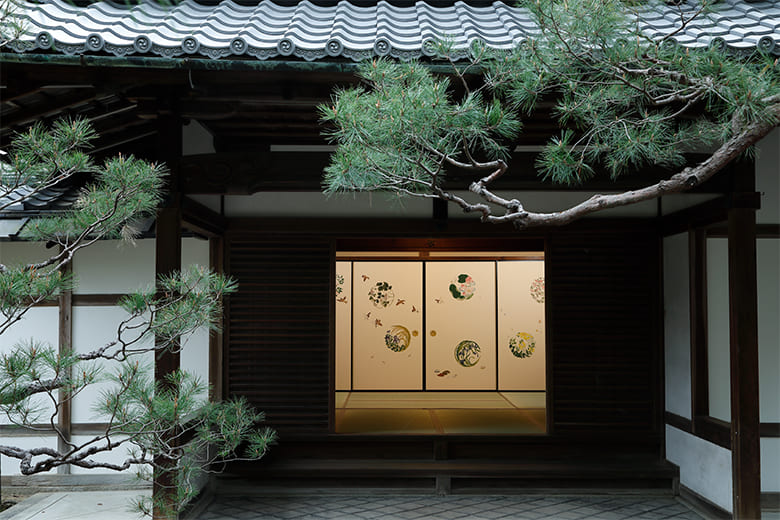
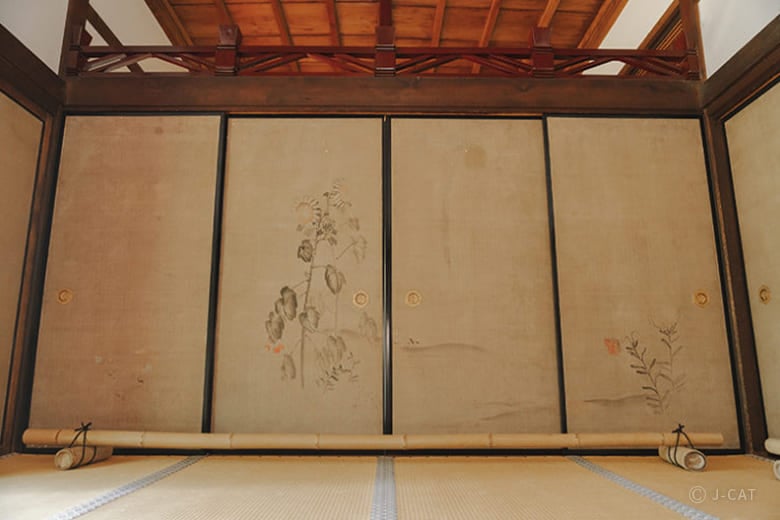
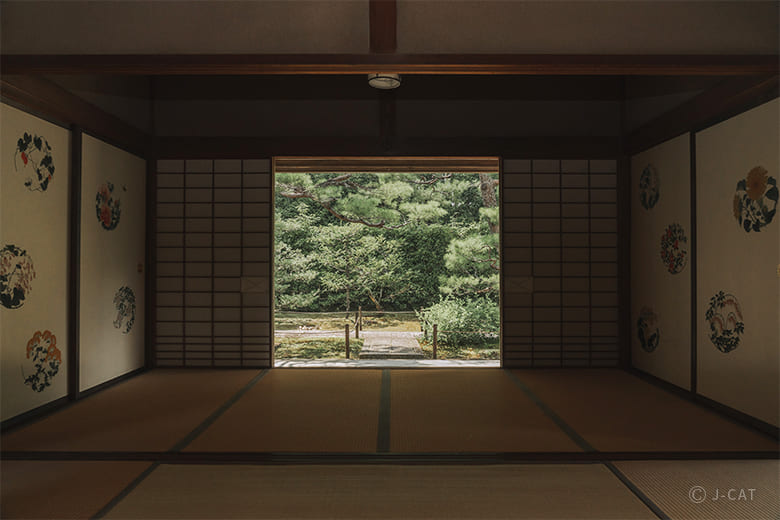
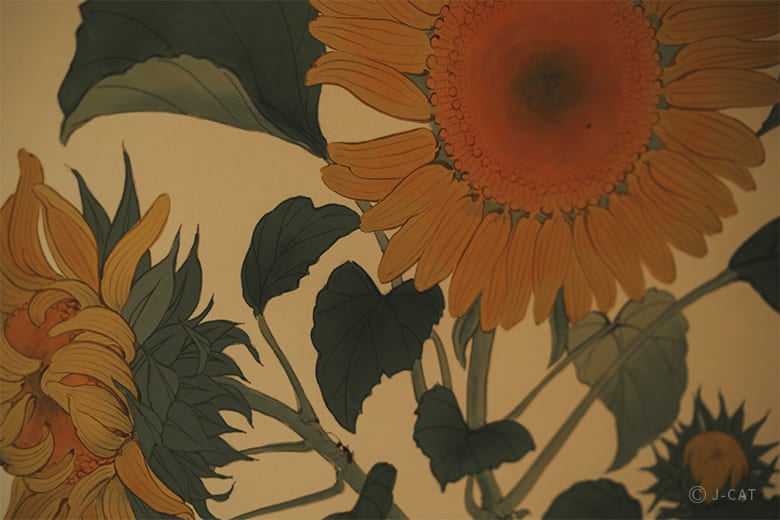


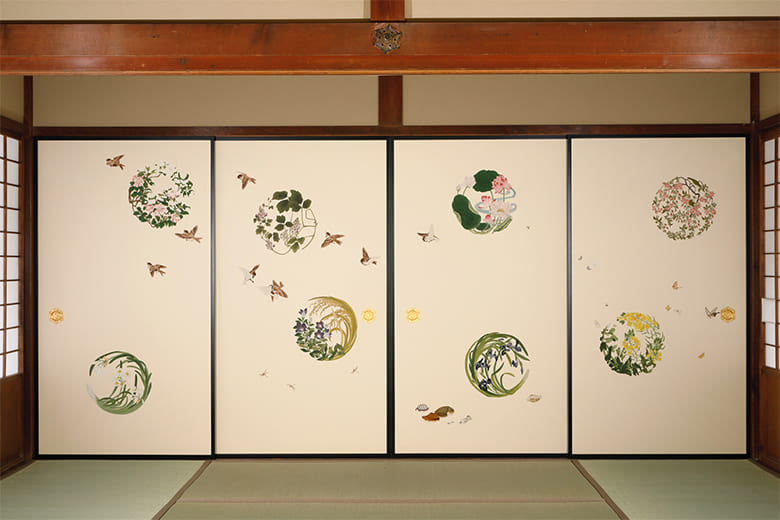
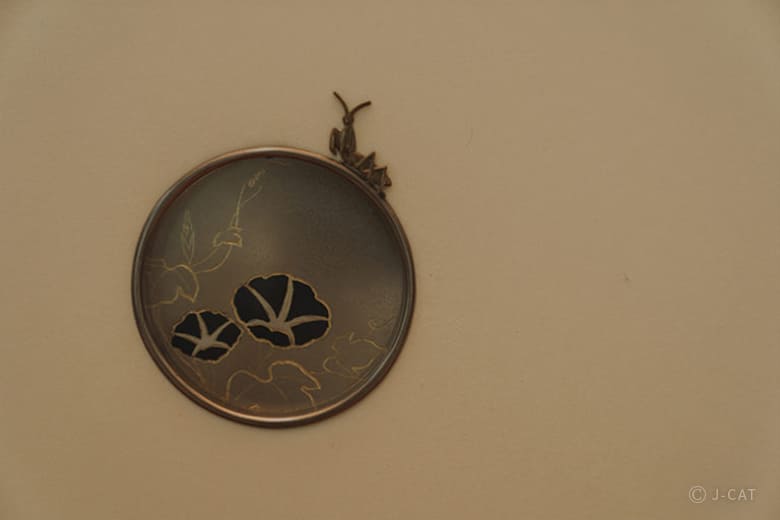
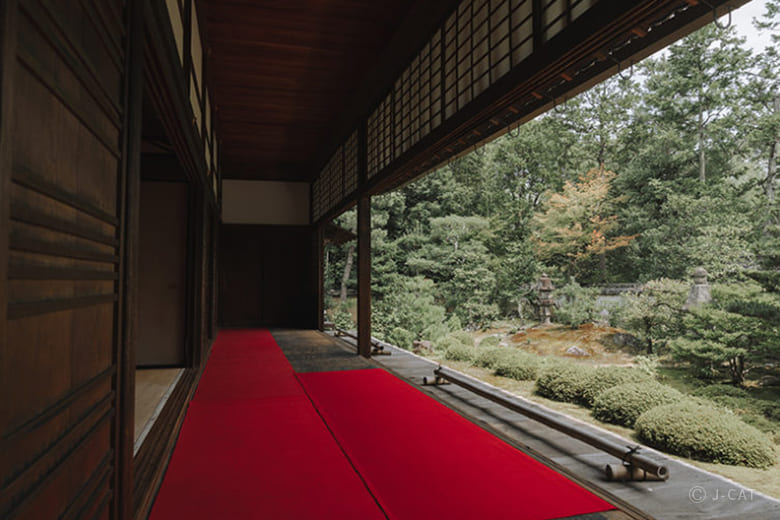
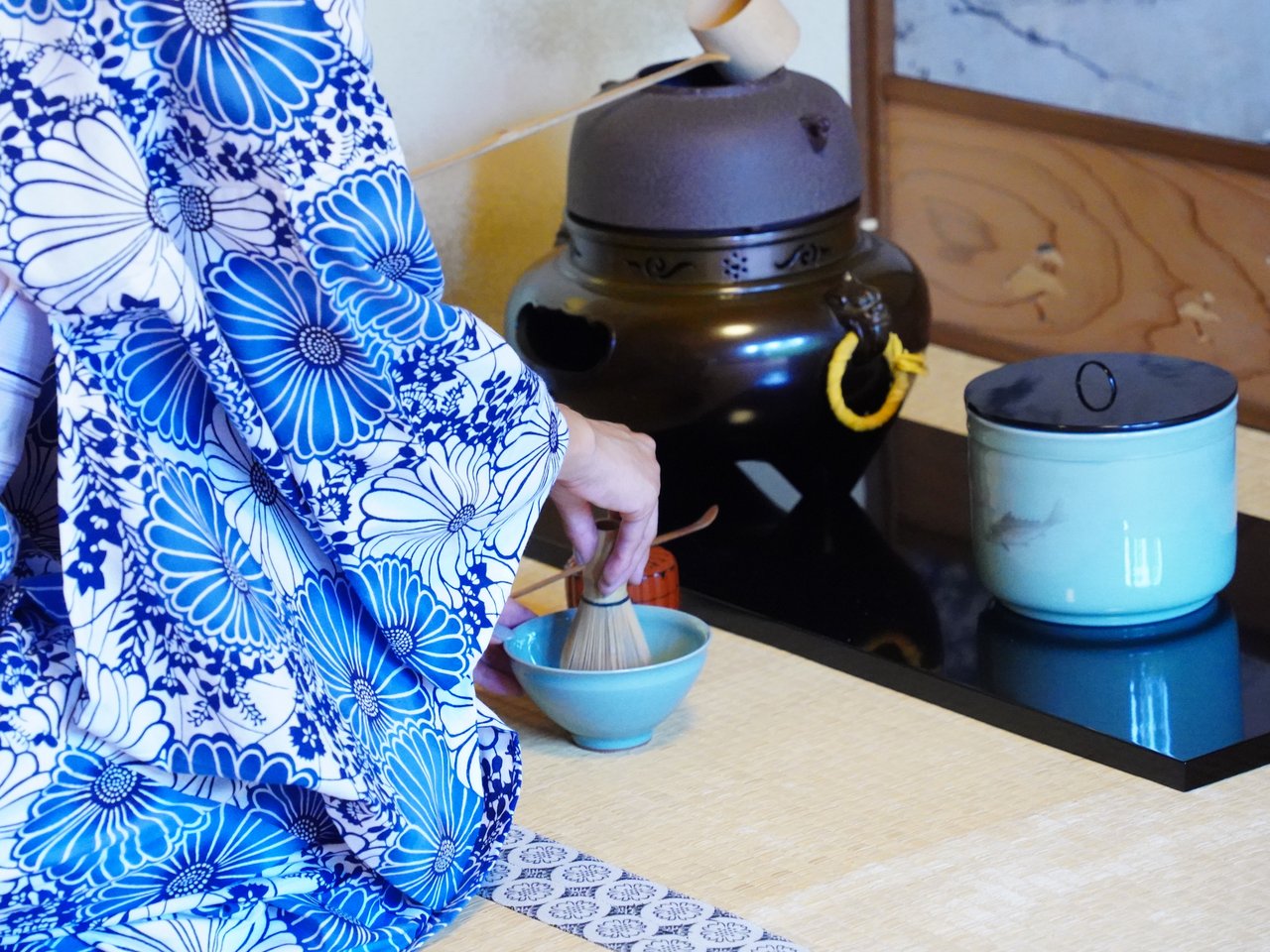
















Overview
Myoshinji Daiouin Temple in Kyoto has excellent artworks: Fusuma (sliding door) paintings created by artists representing the Edo and Meiji period. During your visit, a knowledgeable temple priest will privately guide you through the temple, providing insights into the paintings. After the tour, you can also experience a zazen meditation session to the view of a serene Japanese rock garden, along with matcha tea and seasonal sweets. Enjoy a glimpse into a Kyoto temple's rich artistic and spiritual heritage in this captivating and immersive experience.
Key Features
・Private temple tour led by a priest who will provide insights into the usually closed-to-the-public fusuma paintings and the building itself, a Registered Tangible Cultural Property of Kyoto
・Experience zazen meditation and enjoy tea and sweets to the view of a picturesque Japanese garden
・Witness a captivating tea ceremony performance in the tea ceremony room (optional)
*You may also like this experience in the same location:
Experience Zen Buddhist Training at Daiou-in Temple, Myoshin-ji, Kyoto—With Zazen and Vegetarian Cuisine
Kyoto
120mins
from ¥29,000 /person
1 - 6 participants
Available in English
Cancel free up to 8 days prior
Details
Discover fusuma paintings by Shibata Zeshin in a 400-year-old temple
Myoshinji Daiouin Temple was founded in 1603 by Mitsutada Ishiko, a chief retainer of the Owari Domain (ruled by one of the major families of the Tokugawa clan, and located in the western part of present-day Aichi Prefecture). It holds much historical significance and charm, representing the intertwined stories of important figures in Japanese history, including Tokugawa Ieyasu, the first shogun of the Tokugawa Shogunate of Japan.
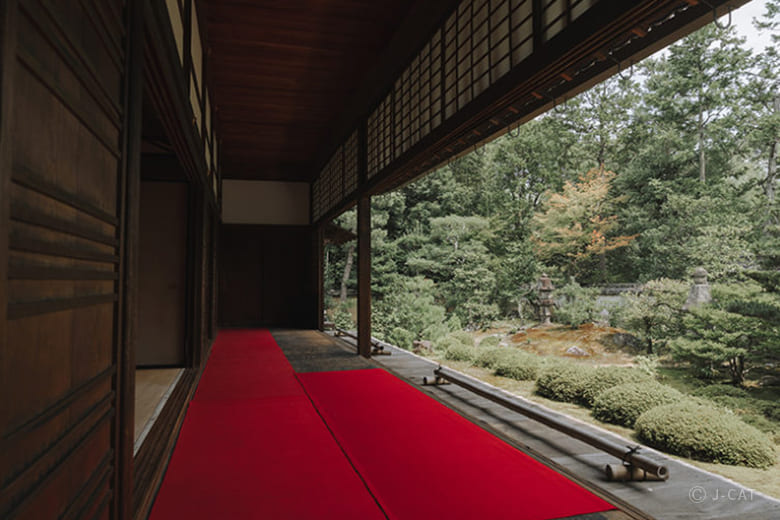
The temple’s main hall overlooks a beautiful karesansui moss garden
The temple is also renowned for its fusuma paintings by Shibata Zeshin. Zeshin was a skilled lacquer craftsman and Japanese-style painter active from the Edo period (1603-1868) to the early Meiji period (1868-1912). He created many masterpieces during his time in Kyoto after coming from Edo in 1830. His works are highly sought after, with many sold overseas, making those remaining in Japan quite rare. The temple attracts numerous visitors, especially during the special viewing periods in spring and fall.
Visit the main hall to see Shibata Zeshin's incredible fusuma paintings
Myoshinji Daiouin Temple is usually closed to the public. However, in this unique experience, you will have the opportunity to visit and be guided by the 15th generation head priest, Houkan Ishiko. He will provide commentary while you marvel at the 72 sliding screens in the main hall.
At the age of 24, Zeshin (also known as Reisai) came to Kyoto to study the Shijo school of Japanese painting. His fusuma paintings from that time are truly magnificent, showcasing his abundant talent and earning him the well-deserved reputation of a genius.

Chief Priest Ishiko explaining the masterpiece "Guo Ziyi"
The Shijo school is known for its flat and beautifully stylized paintings, but many of Zeshin's works at Myoshinji Daiouin Temple exhibit a remarkable sense of realism. For instance, in his renowned painting "Guo Ziyi'' that portrays the namesake Tang Dynasty warlord and his family, “the figures are depicted with dynamic poses, and the physical details, including the body shapes and wrinkles of the elderly women, are all meticulously captured," explained Priest Ishiko.
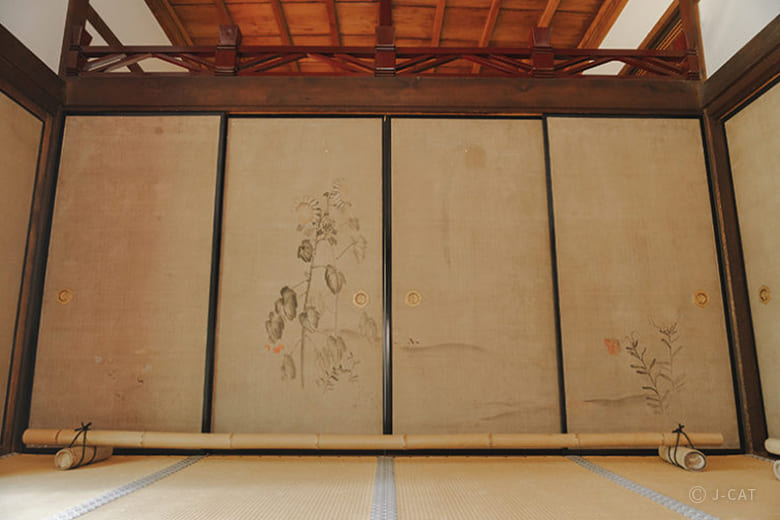
"Flowers and Plants of the Four Seasons" showcases exquisite brushwork depicting seasonal flowers and plants
Zazen meditation with a serene garden view
After learning about the temple's history and its connection with Shibata Zeshin, you will proceed to the main hall to partake in a zazen meditation session. Just outside the hall lies the stunning karesansui garden, which is a blend of karesansui (dry landscape garden) and chisen kaiyu-shiki (designed to let visitors stroll around a pond and admire the scenery). The garden features lush evergreen trees and vibrant green moss, creating a breathtaking sight throughout the year. Depending on the season, you may also find flowers or autumn leaves gracing the garden, adding to its beauty.
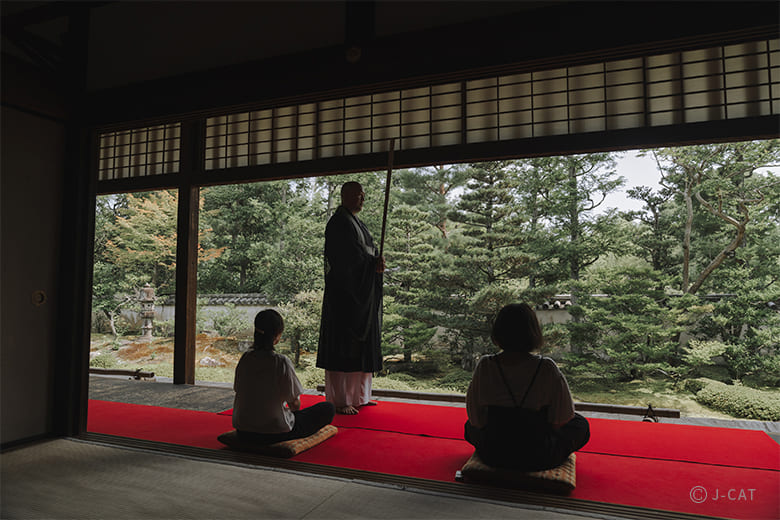
Discovering inner peace through zazen meditation
First-timers to meditation need not worry, as you will receive clear instructions on how to sit, maintain proper posture, and to “gaze about one meter away at the floor.” In today's fast-paced world, we all need moments to pause and contemplate. Let your mind relax as you immerse yourself in the soothing sounds of rustling leaves and birdsong.
A fusuma painting of a thousand kinds of flowers, skillfully drawn by a contemporary temple artist
The Chigusa-no-Ma Room in the Meiji Palace, unfortunately destroyed by fire during the war, was once home to the remarkable "Hana-no-Maru Grand Ceiling" by Shibata Zeshin. This stunning room boasted over 100 exquisitely crafted circular paintings of flowers on its coffered ceiling, creating a solemn and beautiful ambiance. The floral circles in this masterpiece later became a significant influence for generations of painters.
The ceiling painting, sadly lost to time, is now only preserved as a rough sketch by Zeshin himself. However, Myoshinji Daiouin Temple has undertaken the "Daiouin Fusuma Painting Project" to bring back the original artwork. Nyofu Yasukawa, the sole temple artist in Japan, is leading this revival effort.

The fusuma painting at the official entrance to the kuri (monastery kitchen)
Nyofu Yasukawa is a prominent artist with extensive experience in restoring and adding color to national treasures and important cultural properties over the years. The project aims not only to raise awareness about Shibata Zeshin but also to preserve the precious traditional techniques of temple artists for generations to come.

Also pay attention to the temple’s pull metal fittings, each one intricately and uniquely designed
Yasukawa beautifully infused his brilliant coloring technique and playful spirit into Zeshin’s “Hana-no-Maru" to create his “Chigusa-no-Hana-no-Maru" (fusuma paintings of flowers in a thousand varieties). The grand entranceway to the kuri (monastery kitchen) is a stunning space that vividly portrays the four seasons, welcoming visitors with vibrant depictions of butterflies, shells, and sparrows.
During the tour, you will have the chance to explore the "Hanae-mi-no-ma," where you will find several hidden creatures within the paintings. Additionally, you will be shown the pull metal fittings that symbolize the concept of reincarnation, creatively expressed through the changing seasons.
Indulge in tea and sweets while surrounded by stunning fusuma paintings at the kuri
Exclusive to this plan, you will be treated to matcha tea and delightful sweets in the Hanae-mi no-ma room at the end of the tour. Savor the matcha from a Kiyomizu ware bowl crafted by Suwa Sosan and enjoy fresh confections from the renowned Omuro Wagashi Itotatsu confectionery shop. The owner, trained at a long-established store, skillfully blends traditional flavors with a youthful touch in their creations.
If red bean paste sweets aren't your preference, we can provide you with dried sweets as an alternative.
As an optional treat, you can also choose to have matcha prepared and served right in front of you, tea ceremony style, in the tea room.
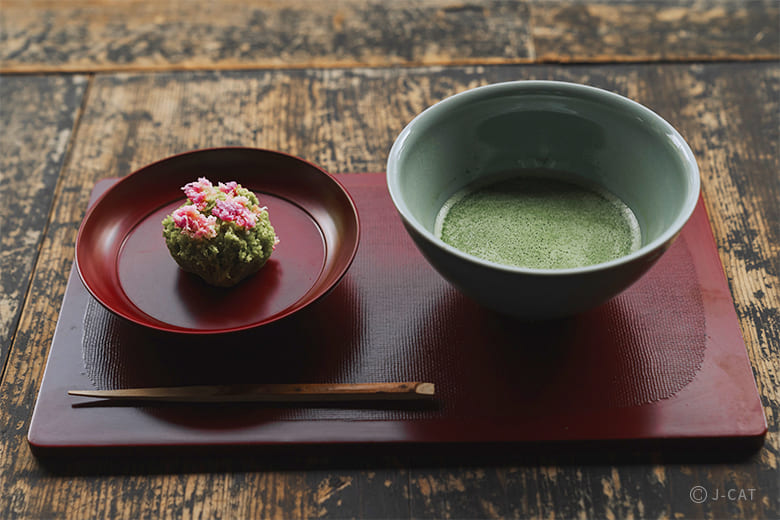
Savor freshly-made sweets and matcha prepared by Omuro Wagashi Itotatsu, a Japanese confectionery shop
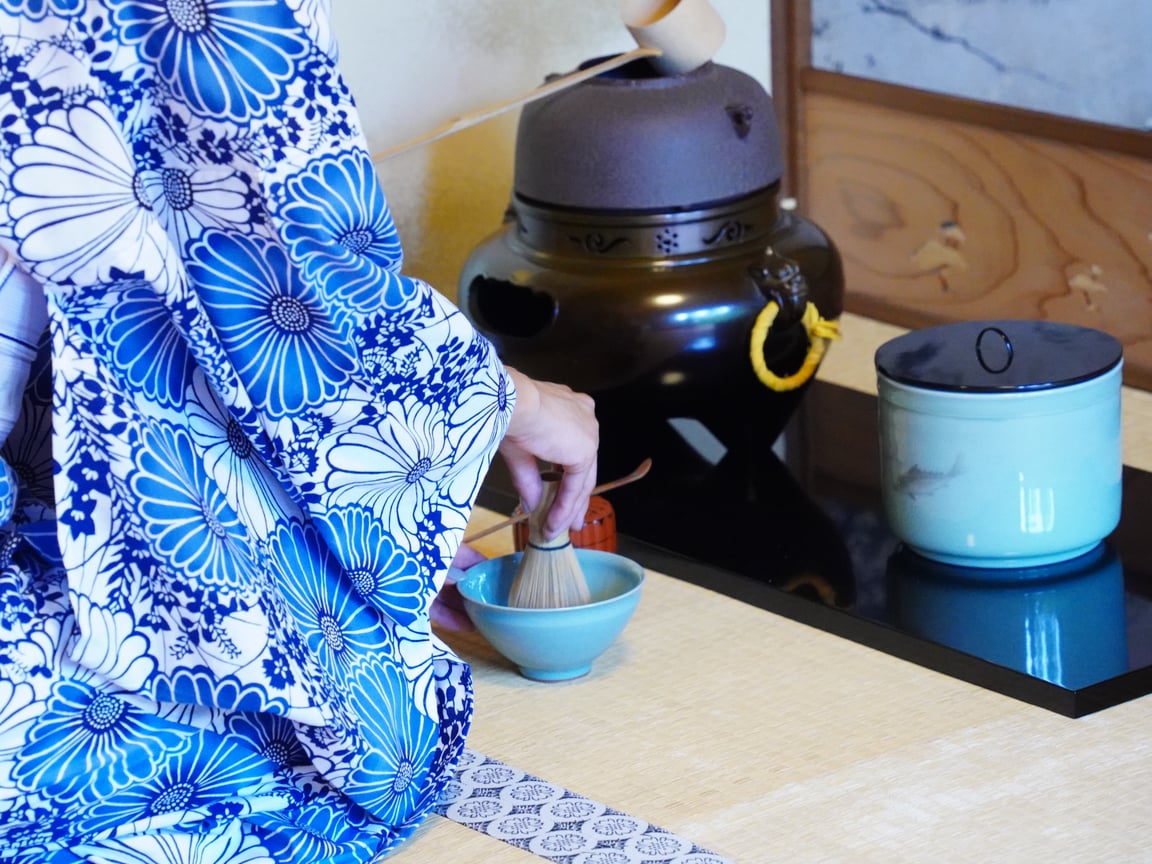
Witness a captivating tea ceremony performance in the tea ceremony room (optional)
The entranceway and the Hanae-mi-no-ma room, where you can see the “Chigusa-no-Hana-no-Maru" paintings, boast exquisite fittings and plasterwork by skilled artisans. Visitors can take a moment to relax and appreciate the beautiful fusuma paintings and the serene atmosphere.
During this special tour of Myoshinji Daiouin Temple, you will have the opportunity to marvel at the fusuma paintings created by a brilliant artist from Edo, as well as those by Japan's only master temple artist, all with insightful commentary from the temple's knowledgeable priest. This treasured Japanese art will continue to soothe our hearts for generations to come.
Myoshinji Daiouin Temple
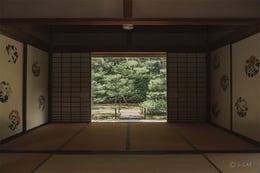
Myoshinji Daiouin Temple
In 1603, Mitsutada Ishiko, the eldest son of Mitsumoto Ishikawa, who was the lord of Tatsuno Castle (located in Hyogo Prefecture), constructed this temple as a memorial for his father. The temple's founding priest was his uncle, Genjo Keinan. Myoshinji Daiouin Temple gained fame for its remarkable fusuma paintings created by Shibata Zeshin, a genius artist known among those in the know during the late Edo period to the early Meiji period.
The main hall, study, kitchen, and front gate are all Registered Tangible Cultural Properties of Kyoto Prefecture. In 1726, both the main hall and study were rebuilt, while the kitchen underwent remodeling during the late Edo period.
Location
Myoshin-ji Daiou-in
Ukyo Ward, Kyoto
Request for booking
Select first preferred date (JST)
December 2025
Sun
Mon
Tue
Wed
Thu
Fri
Sat

Instant Booking

Request Booking

17
Full

17
Unavailable
Kyoto
120mins
from ¥29,000 /person
1 - 6 participants
Available in English
Cancel free up to 8 days prior
Things to know
Contact Us
If you have any questions, please contact us using the form below.
We also accept bookings from corporate clients and travel agencies.